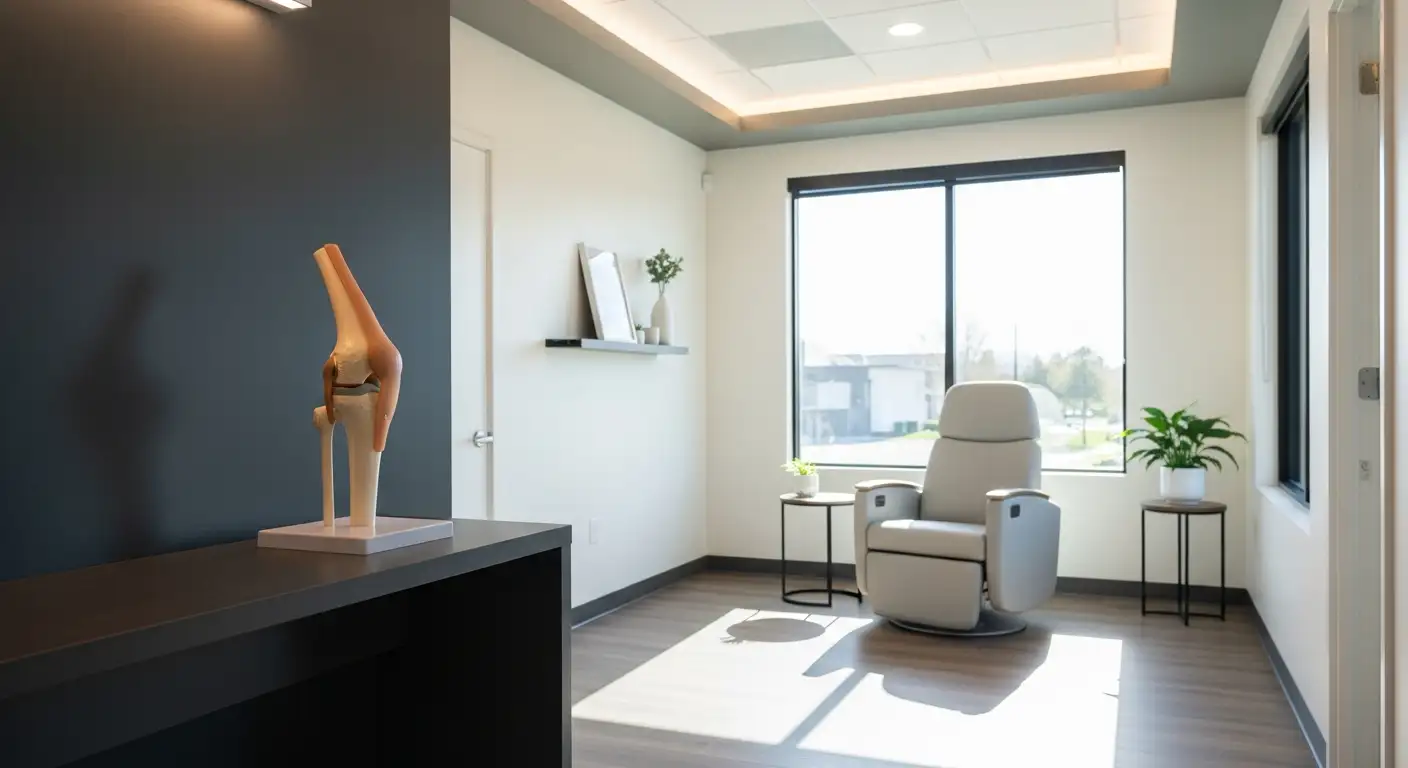
Understanding Knee Pain
Introduction to Knee Pain
Knee pain is a common ailment that can affect individuals of all ages. It can arise from various underlying issues, often leading to discomfort and restricted movement. One notable condition related to knee pain is the tibial tuberosity bump, which is particularly prevalent among active children and adolescents. Understanding the causes and characteristics of knee pain is essential for effective management and treatment.
When knee pain occurs, it may be related to overuse injuries, growth spurts in adolescents, or underlying medical conditions. Recognizing the significance of symptoms and the importance of proper diagnosis can lead to better treatment approaches.
Common Causes of Knee Pain
Several factors can contribute to knee pain. Below are some of the most common causes:
Potential CausesDescriptionOsgood-Schlatter DiseaseCaused by repetitive stress on the tibial tuberosity where the patellar tendon attaches to the shinbone (UConn Health)Growth SpurtsRapid growth can lead to increased tension on knee structures, particularly in young athletes (OrthoInfo)Overuse InjuriesRepetitive activities, particularly in sports like running and jumping, can strain the knee and its connective tissues (OrthoInfo)TendonitisInflammation of tendons around the knee, often due to overuse or injury.Meniscus TearsDamage to the cartilage in the knee that can occur due to twisting movements or heavy lifting.
Knee pain can manifest in varying severity levels and may require proper medical evaluation to determine the underlying cause effectively. Awareness of conditions like the tibial tuberosity bump can significantly aid in diagnosing and managing knee discomfort, especially in physically active populations. Understanding the nuances of symptoms associated with different causes, such as Osgood-Schlatter disease, is vital for accurate treatment plans.
Osgood-Schlatter Disease Overview
Definition and Description
Osgood-Schlatter disease is a painful condition characterized by the swelling of the bump located on the upper part of the shinbone, just below the knee. This prominent bump is known as the anterior tibial tubercle. The condition often arises during periods of growth and is particularly common in active adolescents MedlinePlus.
The disease is thought to occur due to small injuries and overuse, particularly in young athletes whose knees have not yet fully matured. Activities that involve running, jumping, or significant physical exertion can exacerbate the symptoms.
Epidemiology and Risk Factors
Osgood-Schlatter disease primarily affects adolescents, with a higher incidence among boys than girls. It is prevalent in youth who engage in sports such as soccer, basketball, volleyball, and gymnastics. The following table provides an overview of key demographics and prevalence:
Demographic FactorsDetailsAge GroupCommon in adolescents (ages 10-15)GenderMore prevalent in boys than girlsSports ActivitiesSoccer, basketball, volleyball, gymnastics
According to the available information, the symptoms usually manifest when adolescents are involved in activities that place significant strain on their knees, contributing to the risk of developing this condition. Understanding these factors can help identify individuals at higher risk of experiencing the symptoms associated with Osgood-Schlatter disease. For further insights on managing knee issues, explore articles on related topics such as sartorius exercises and the knee joint line.
Symptoms and Diagnosis
Recognizing Osgood-Schlatter Symptoms
Osgood-Schlatter disease manifests through several notable symptoms. It results in painful swelling over the bump on the upper part of the shinbone, known as the anterior tibial tubercle. Common symptoms include:
SymptomDescriptionPainful SwellingNoticeable swelling over the bump on the shinbone.Leg PainDiscomfort that worsens with activities such as running, jumping, or climbing stairs.TendernessSensitivity to pressure over the affected area.Varying SeverityThe degree of swelling can differ from mild to pronounced.
These symptoms often worsen with physical activity and may lead to decreased mobility. Individuals should be aware of these signs to seek appropriate care for the tibial tuberosity bump.
Diagnostic Process and Tools
The diagnostic process for Osgood-Schlatter disease begins with a thorough physical examination by a healthcare provider. During this exam, the physician assesses the symptoms and evaluates the knee and leg's condition.
Additional diagnostic tools may include:
ToolPurposePhysical ExaminationDirect assessment of the knee for swelling, tenderness, and range of motion.Bone X-RayMay reveal swelling or damage to the tibial tubercle below the knee.
This combination of examinations helps confirm the diagnosis and rule out other conditions. If symptoms are present, it's advisable to consult a healthcare provider for further assessment and appropriate management options. For more insights into knee pain and its various conditions, check out the resources on knee joint line and pain location chart.
Treatment Options
Managing Osgood-Schlatter Pain
Managing pain associated with Osgood-Schlatter disease primarily involves limiting activities that exacerbate discomfort. The initial approach often includes resting the affected knee and engaging in alternate activities that do not provoke pain. Icing the tibial tuberosity bump area is frequently recommended to help reduce inflammation. Stretching exercises aimed at the quads and hamstrings are essential to support recovery and flexibility. For a comprehensive look at exercise techniques, refer to our article on best exercises for quads.
Treatment MethodDescriptionRestAvoid activities that cause knee pain.Ice TherapyApply ice to the affected area to reduce swelling.StretchingIncorporate stretching exercises for the legs.BracingUse braces for added support if necessary.CastingIn severe cases, temporary casting may be advised.
In most cases, the symptoms gradually improve as the young individual completes their growth spurt, typically by the age of 14 for girls and 16 for boys [1].
Intervention Strategies and Considerations
If symptoms persist despite initial management, further intervention strategies may be explored. Bracing or casting can provide significant support to the knee, allowing the individual to participate in activities without exacerbating pain [2]. Surgical options are rare, typically reserved for severe cases where conservative approaches fail.
Rehabilitation focuses on enabling a safe return to sports and physical activities at an appropriate time based on recovery milestones. Activities may gradually resume as comfort levels improve. Though the bony prominence of the tibial tuberosity may remain after pain subsides, most patients find their symptoms completely resolve within 6 to 18 months [3].
To learn more about supplementary exercises to alleviate knee-related issues, visit our resources on sartorius exercises and plica syndrome exercises.
Recovery and Prognosis
Recovery Timeline and Expectations
Recovery from Osgood-Schlatter disease varies among individuals. Typically, symptoms resolve within 6 to 18 months. Most children experience a reduction in symptoms as they complete their adolescent growth spurt—around age 14 for girls and age 16 for boys [1]. Even though the bony prominence at the tibial tuberosity may persist, the associated pain lessens as the individual matures.
Age GroupExpected Recovery TimeframeGirls14 years old (around)Boys16 years old (around)Resolution of Symptoms6 to 18 months
Activities can gradually be resumed once the growth plates around the knee close. This may involve a tailored approach to rehabilitation that incorporates gentle exercises, such as sartorius exercises or best exercises for quads, ensuring that the knee remains functional and pain-free.
Long-Term Outlook and Follow-Up
Osgood-Schlatter disease has a favorable long-term outlook. Most individuals will find that the symptoms completely disappear after reaching skeletal maturity [1]. Although surgical intervention is rarely necessary, and the prominence at the tibial tubercle may remain, it typically does not lead to any significant long-term issues or complications.
Follow-up care may include monitoring for any recurrence of symptoms, ensuring that the individual maintains an active lifestyle while adhering to appropriate activity levels. Rehabilitation might also involve exercises to strengthen surrounding muscles and improve knee stability. Individuals should remain vigilant for any changes in symptoms that could indicate other conditions, such as tibialis anterior pain near knee or popliteus tendinitis. Encouraging effective communication with healthcare providers can foster a comprehensive recovery strategy while promoting overall knee health. For more insights on knee anatomy and function, consider reviewing articles on the knee joint line and suprapatellar pouch.
Prevention and Lifestyle Tips
Preventative Measures for Osgood-Schlatter
While Osgood-Schlatter disease may not be entirely avoidable, especially among highly active children, certain measures can help reduce the risk or severity of symptoms. Regular stretching of the quadriceps and hamstring muscles is essential. Enhancing strength and flexibility in thigh muscles can increase agility and reduce susceptibility to this overuse injury [3].
Preventative MeasureDescriptionStretching ExercisesIncorporate quadriceps and hamstring stretches to improve flexibility.Muscle StrengtheningEngage in activities that strengthen thigh muscles, contributing to knee stability.Activity ModificationsLimit high-impact activities that may exacerbate knee pain during periods of intense symptoms.Proper FootwearUse supportive shoes for sports and physical activities to minimize impact on knees.
Lifestyle Modifications for Knee Health
Maintaining overall knee health is crucial for those at risk of conditions like Osgood-Schlatter. Lifestyle modifications can play an essential role in managing knee health and preventing injuries.
For individuals concerned about specific knee conditions such as tibialis anterior pain near knee or seeking supportive strategies like a hyperextended knee brace, consulting with a healthcare professional is advisable. Adopting these preventative measures and lifestyle modifications can aid in promoting knee health and overall well-being.
References
[2]:
[3]:





